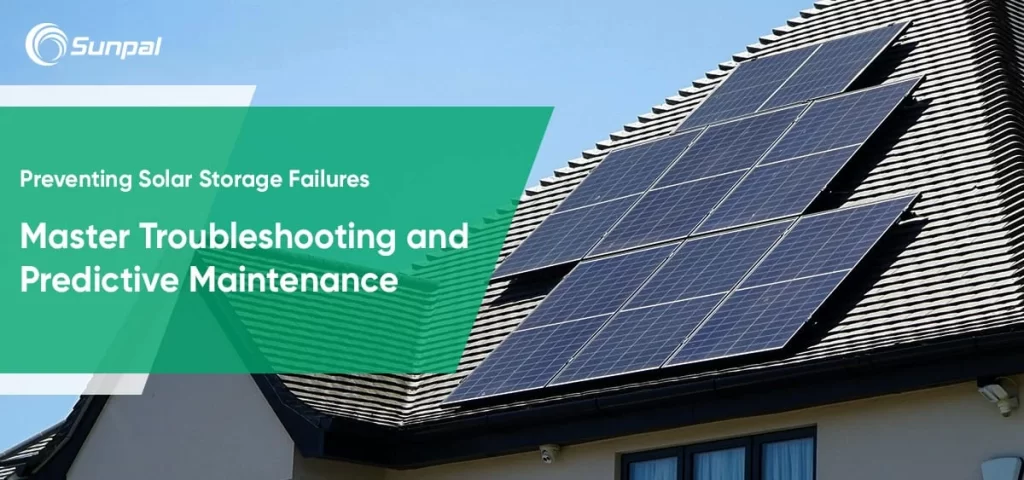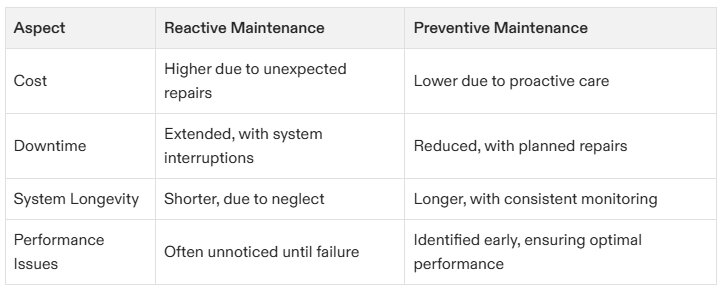
Introduction: Why Preventing Failures in Solar Storage Systems Matters
When was the last time you thought about the reliability of your solar storage system? With more homes and businesses adopting solar energy solutions, ensuring their longevity and efficiency is essential. Solar storage system troubleshooting isn’t just about fixing problems; it’s about preventing solar storage system failures before they even begin. As solar energy becomes a cornerstone of sustainable power, the risks associated with system failures are becoming a growing concern. Understanding and implementing predictive maintenance can save not only money but also ensure that solar storage systems perform optimally throughout their lifespan.
The Shift to Preventive Maintenance in Solar Storage Systems
Traditionally, solar storage systems were maintained reactively—fixing things after they broke. This reactive maintenance often led to costly repairs, system downtime, and even safety risks. However, the solar industry is moving toward a smarter approach: preventive maintenance. With the aid of predictive diagnostics, solar systems are now equipped with sensors that can detect issues before they become critical, allowing for timely repairs and system adjustments. This shift not only extends the life of solar batteries but also enhances overall system performance.
Reactive vs. Preventive Maintenance: A Comparison

Identifying Common Failures in Solar Storage Systems
One of the most effective ways to prevent solar storage system failures is by understanding what could go wrong. The most common issues are battery degradation, inverter failure, and poor system calibration. These problems are often due to inconsistent monitoring, neglect, or environmental factors such as temperature fluctuations.
Typical Solar Storage System Failures
- Battery Degradation: Overcharging or undercharging can lead to a reduced lifespan of the battery.
- Inverter Failures: Inverters, which convert stored energy for household use, can fail due to overheating or electrical faults.
- Temperature-Related Failures: Extreme temperatures can damage both batteries and inverters, reducing their efficiency.
How Predictive Maintenance Helps
By leveraging IoT sensors and smart monitoring systems, predictive maintenance can alert users about battery degradation levels, inverter health, and environmental factors like temperature. This data enables technicians to intervene before minor issues escalate.
Leveraging Data: The Power of Diagnostics in Predictive Maintenance
Incorporating smart monitoring systems into solar storage solutions is a game-changer. These systems rely on data-driven insights to assess the health of the storage system in real-time. By monitoring key metrics such as battery voltage, charging cycles, and ambient temperature, predictive maintenance tools can forecast when a component is likely to fail.
Key Data Points to Monitor in Solar Storage Systems

Creating a Maintenance Schedule: How Often Should You Check Your Solar Storage System?
An essential aspect of solar storage system care is adhering to a well-defined maintenance schedule. Regular maintenance helps prevent minor issues from escalating into major failures. For homeowners and businesses, this means scheduling routine checks and calibrations.
Best Practices for Solar Storage System Maintenance
- Monthly Checks: Inspect the inverter, batteries, and wiring for signs of wear or overheating.
- Quarterly Inspections: Test the system's energy efficiency and check the performance of the solar panels.
- Annual Service: Schedule a professional inspection to assess battery health and overall system performance.
Example of a Solar Storage Maintenance Schedule

Tools and Resources for Troubleshooting Solar Storage Systems
With the increasing availability of smart monitoring tools and diagnostic platforms, homeowners and businesses can perform remote diagnostics or conduct basic troubleshooting themselves. Many modern solar systems come with dedicated apps or software platforms that can provide real-time performance data and suggest potential maintenance actions.
Recommended Tools for Solar System Troubleshooting
- SolarEdge Monitoring: Provides real-time data on energy generation, inverter performance, and battery status.
- SunPower Monitoring: Offers detailed performance metrics and energy production analysis.
- DIY Diagnostic Kits: Available for troubleshooting common issues like wiring faults or inverter malfunctions.
Case Study: How Predictive Maintenance Saved a Commercial Solar Storage System
A solar storage system at a large commercial facility in California faced recurring inverter issues, leading to frequent system downtime. By implementing predictive maintenance tools, the facility was able to diagnose the issue early—an overheated inverter—and perform timely repairs before the inverter completely failed. As a result, the business reduced its energy downtime by 40%, saving thousands of dollars in emergency repair costs.
Results of Predictive Maintenance Implementation

Conclusion: Why Preventive Maintenance is Crucial for Your Solar Storage System’s Longevity
In conclusion, solar storage system troubleshooting should no longer be an afterthought. By adopting a preventive maintenance approach, you can significantly reduce the risk of failures, improve system efficiency, and extend the life of your solar system. Investing in predictive tools and adhering to a maintenance schedule ensures that your solar energy investment remains reliable and cost-effective for years to come.
Are you ready to maximize your solar storage system's lifespan and performance? Start implementing a predictive maintenance plan today to ensure a reliable, efficient solar energy system for your home or business.
